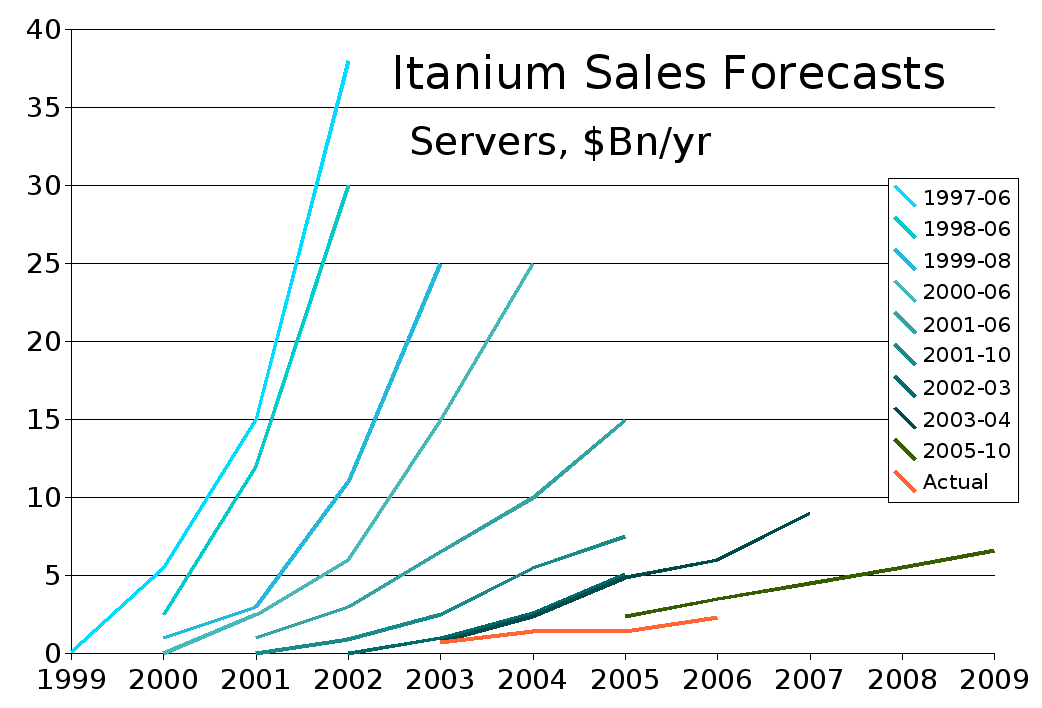It was Intel who designed BTX. They got a bit of a shock when the whole entire PC community said "up yours we're not going out and buying new cases" so it was a short lived affair.
Thing is, some of their ideas weren't that bad, but they really should have made it compatible
with ATX, I think that should have been possible (some of the earlier BTX board actually
were compatible afaik). Similar story with Itanic/Itanium. There were some very nice ideas
in there, but breaking compatibility with x86 (even though it wasn't really targeted at that
market anyway) ruined those plans once x86_64 (or AMD64) was rolled out. A big chunk
of the former target market has been taken over by simpler (less expensive) chips, and
the really high-end mainframe type of stuff is still ruled by IBM and its system z10 these
days (90% market share in 2008,
source).
TBH, I sort of wish for a new architecture to replace x86 in the marketplace, we really
should discard most of that at this point. I mean, it's a 45 year old architecture for
eff's sake (well, parts of it, anyway). There really are many things that can be done much
more cleverly than they're done in x86.
Just imagine how much computing power you could get out of a chip with a properly modern
architecture freed of all that legacy crap that's allowed to draw 100 W :dribble:.
I know, not gonna happen, but one can dream...
EDIT: Maybe a bit more realistic: A desktop targeted ARM chip? Not sure how well they
would scale if you allow them to draw more Watts though
 EDIT 2
EDIT 2: One of the most hilarious and sad cases of optimism I've ever seen:

